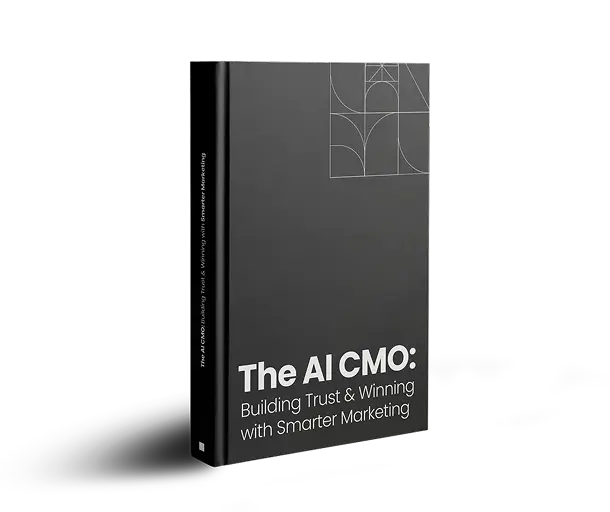
Introduction
According to State of IoT 2022, the number of connected IoT devices growing by 18% to 14.4 billion globally.
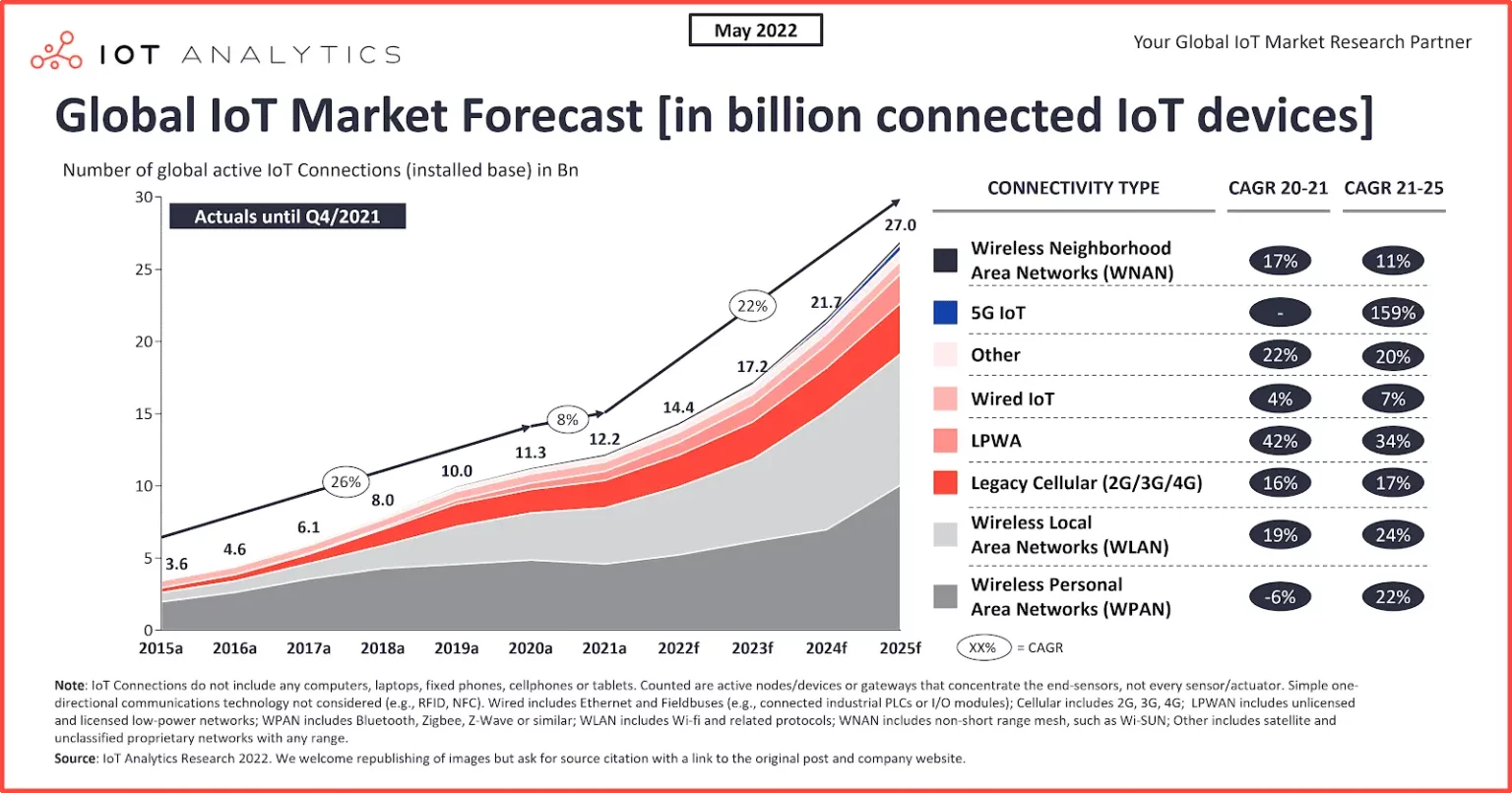
Undoubtedly, IoT is defining and reshaping markets to the extent that its growth has been termed as ‘the next Industrial Revolution.’ Essentially, IoT has influence over the way people work, entertain, travel, communicate and live.
For business, fast adopters are likely to reap the most advantage due to the compelling competitive advantage that is to be gained. In fact, according to Statistica, global IoT spending will touch $1,100 in 2023. Further, it is expected that IoT solutions will reach a market value of $724.2 billion by 2023. With these numbers in mind, marketers need to target the IoT industry and find solutions to the challenges that businesses face.
B2B Lead generation is about attracting and converting potential clients to be interested in what’s on offer. Internet of Things Lead Generation is, therefore, about identifying consumers that are interested in buying IoT solutions and getting them into the B2B buying process.
There are several ways that this can be achieved including through content marketing (e.g., Whitepaper syndication), word-of-mouth referrals, public relations, seminars, webinars, referrals, social media marketing, and so on.
Challenges Faced by IoT Adopters
There are several challenges that businesses adopting (or that wish to adopt) IoT face. In fact, according to the World Economic Forum, 88% of business leaders are overwhelmed by the impact of IoT on their business models and the resulting long-term implications. Such challenges can definitely be opportunities for those that seek to understand the underlying issues and that go a step further to find ways to address the problems squarely.
From a marketer’s perspective, some of the general challenges that are specific to IoT buyers include the following:
- Defining a value proposition. Sometimes the B2B buyer may not understand the unique value proposition that an IoT product or service may have for their business. Marketers must make the buyer understand how the IoT solution will bring real value to the company in question.
- Lack of adequate stakeholder knowledge: Stakeholders often have varying familiarity with IoT systems including their impacts and risks. For example, technical buyers may understand IoT but may lack decision-making powers. On the other hand, decision-makers may lack technical IoT knowledge. As such, marketers must find ways to speak to different stakeholders in a meaningful way and prepare each of the collaborating stakeholders for a sale.
- Security concerns: Security is a massive concern for IoT consumers. The buyer must trust that the IoT solution will not compromise their business in any way. Marketers must, therefore, establish trust for their IoT solutions by assuring B2B buyers and educating them about security protocols used and risks involved.
- Insufficient touchpoints to understand IoT: B2B buyers generally expect more information and a longer sales cycle before they can make a decision. IoT marketers should expect an even longer buying process due to a longer learning curve in IoT. As such, marketers should provide buyers with more touchpoints as is expected.
- Lack of relevant, meaningful and reliable data: B2B buyers rely on data to make impactful decisions. As such, they expect that data will not only be relevant and meaningful for their specific needs but also reliable. Additionally, B2B buyers expect that essential data from IoT systems can be visualized and gamified to better understand outcomes/benefits. IoT B2B marketers must, therefore, understand the value of data for the business in addition to being adept at big data solutions.
Top Inbound Marketing IoT Lead Generation Strategies-
- Provide Early Stage Educational Content
- Provide a Strong Value Proposition
- Use Demand Generation Strategies to Highlight IoT Benefits
- Use Segmentation, Analytics, and Data-Driven Insights
- Use Technical B2B Marketing Approaches and Outsourcing
- Ask For Referrals
Given the challenges mentioned above, one of the best marketing methods for solving these IoT marketing-related challenges is by using inbound marketing. More specifically, content-driven inbound marketing strategies can be used to attract, convert, nurture, and close IoT leads into customers.
The emphasis of this blog post will be on inbound strategies for attracting and converting leads for IoT solutions. Below are some of the strategies that can be used.
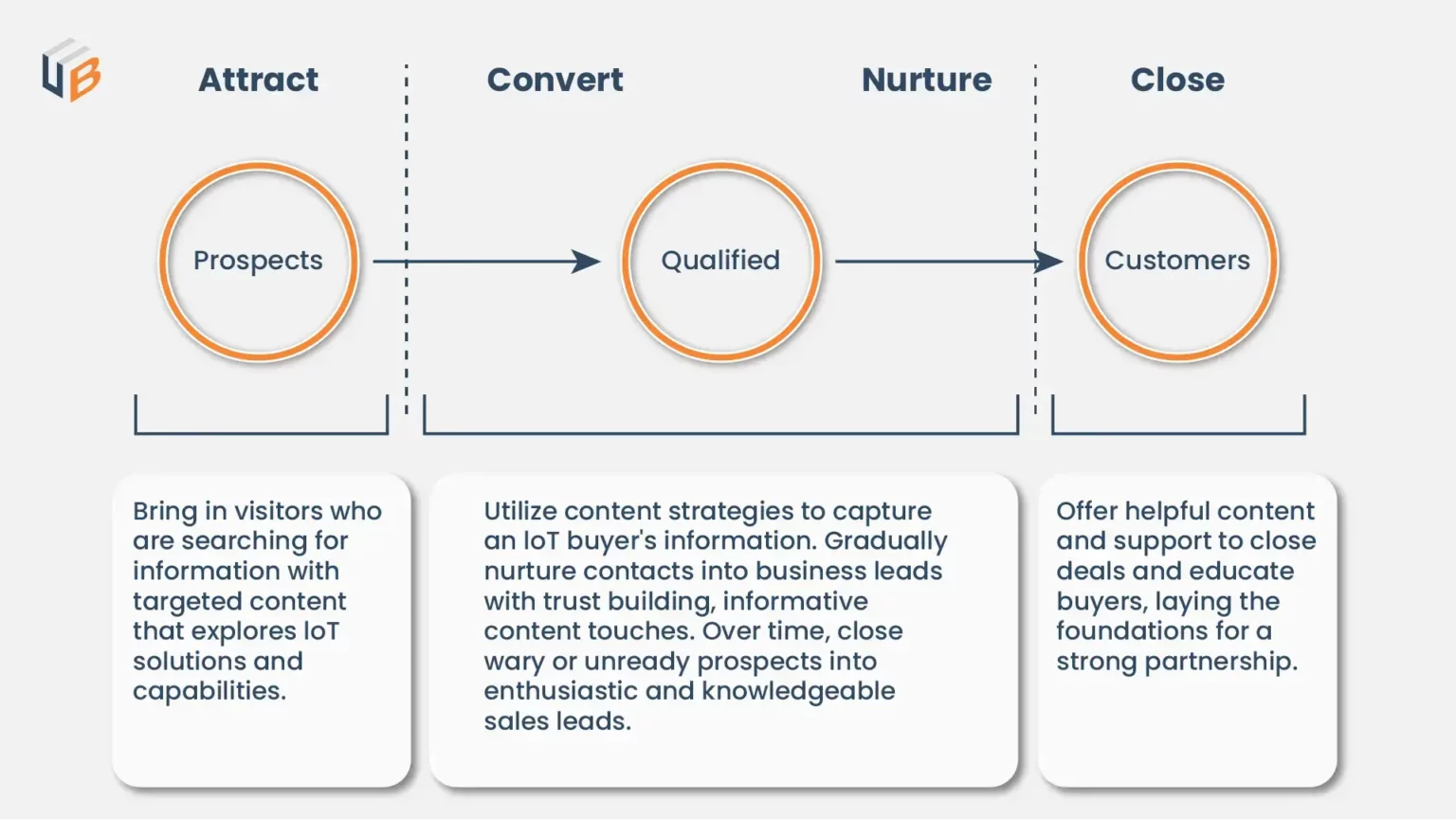
1. Provide Early Stage Educational Content
According to FC Business Intelligence, the top challenge for adopting IoT solutions is understanding the technology followed by legacy systems and then security. (55% understanding the technology, 39% legacy systems, 33% security).
Additionally, technical and non-technical stakeholders have varying familiarity with IoT. As such, marketers need to overcome this education curve by providing the right educational material to the right person at the right time. Content marketing can answer IoT stakeholder hesitations through providing quality content in various ways including through SEO blogs, guides, whitepaper syndication, information graphics, webinars, data visuals, and videos.
Since B2B buyers will generally trust the provider that educates them first, early-stage content will benefit IoT B2B buyers by providing them with information that will help them understand the value and benefits of IoT. The content must provide information about the reasons for investing in IoT. As the lead moves through the B2B buying process, content will also be useful for providing additional information including interoperability between machines and devices using different protocols or that have different architectures.
It’s important to note that according to Stratabeat, 80% of business decision-makers prefer to read a series of articles as opposed to viewing an ad when it comes to acquiring company information.
2. Provide a Strong Value Proposition
In a research, 55% of respondents expect that an IoT solution will improve their efficiency with operations management. So, the question is, how does a marketer convince and inspire a buyer that their solution is feasible and valuable in achieving operational efficiency, optimization of asset utilization, reduction in downtime, improved productivity, the creation of new business opportunities, etc.?
The answer is to focus on the buyer’s core pain point and less on product features. An excellent way to demonstrate this is by providing case studies of an exemplary use of your IoT solution or product.
3. Use Demand Generation Strategies to Highlight IoT Benefits
Like most disruptive technologies, IoT B2B buyers are mostly unaware of its benefits. There are several demand generation strategies that marketers can use to bridge this gap including:
- Focus on bolstering organic search to rank for key terms in IoT
- Use paid advertisements that are tightly targeted to provide high-quality resources or content
- Build and reinforce relationships with key B2B IoT influencers in editorials, trade publications, associations, and content networks.
The idea is to simplify complex ideas that will have a clear advantage in educating and attracting all the stakeholders involved in the IoT buying process.
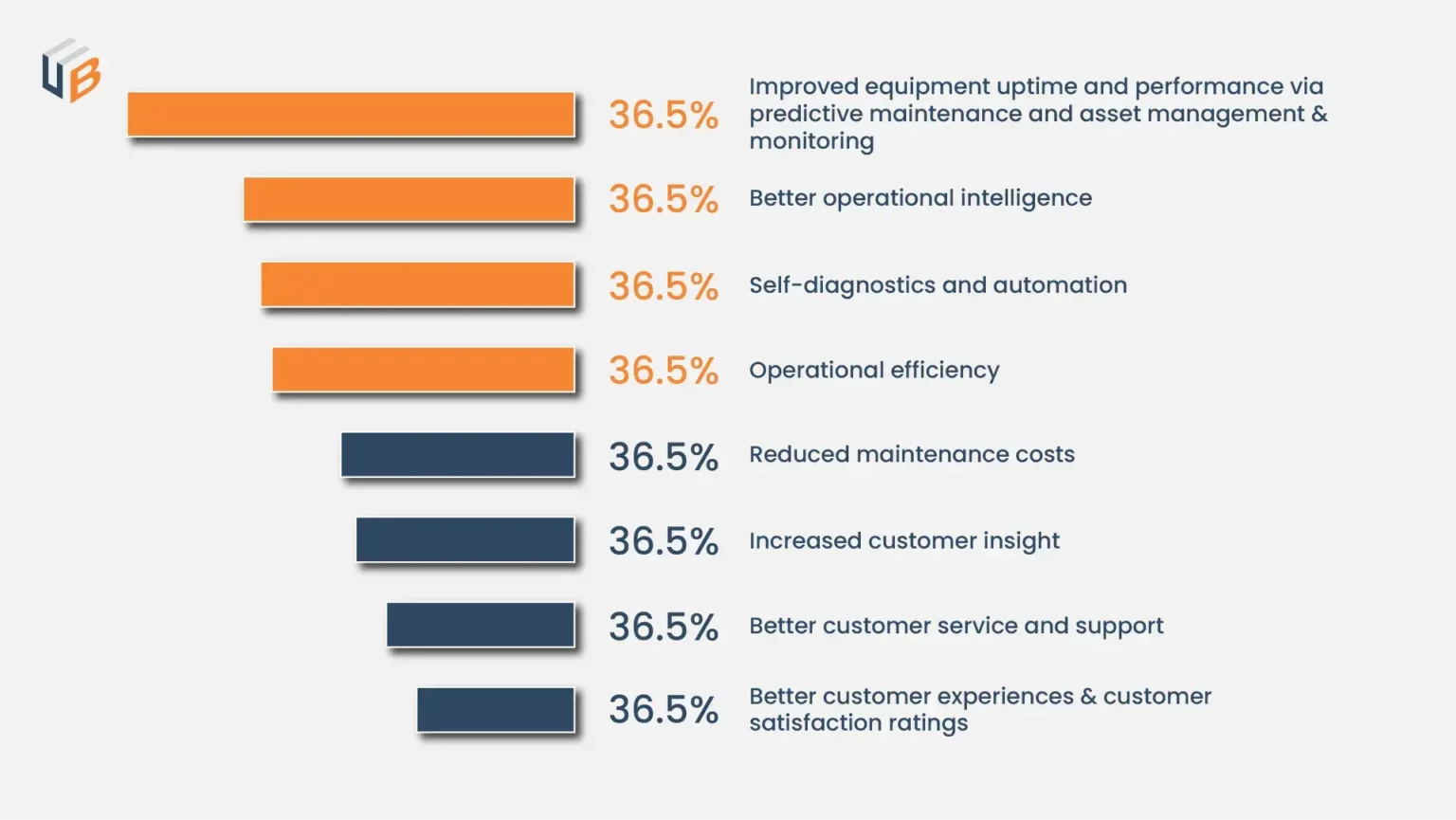
4. Use Segmentation, Analytics, and Data-Driven Insights
IoT marketers have an even stronger compelling reason to use analytics tools to track metrics that have a bearing on the product and on business growth. One reason for this is that B2B IoT buyers usually go through a longer buying process.
Some useful growth metrics that should be tracked include:
- Leads generated from inbound and (outbound) marketing
- Lead quality from inbound campaigns
- Conversion rates
- Closed deals (Leads into customers/sales opportunities)
As for data-driven insights about IoT leads, these should definitely be used to guide segmentation. Segmenting campaigns first requires the marketer to segment leads, and this is only possible through gathering data and analysis which is made a lot easier with marketing automation software.
Some of the pertinent IoT questions that you should be able to answer with data include:
- Which leads are the decision-makers?
- Which leads are technologists and who are the non-technical/business buyers?
- What pain points, hesitations, and questions do specific buyer segments have?
- What level of IoT complexity is appropriate for each segment and what education do they need?
Another way to segment your IoT leads is by industry. Some of the sectors that are in constant need of IoT solutions include the following: transportation, urban planning, manufacturing, healthcare, and medical, banking and finance. Once you understand different segments better, send targeted campaigns to educate and build trust.
5. Use Technical B2B Marketing Approaches and Outsourcing
Progressively, marketers are turning to technical B2B marketing approaches due to the ever-increasing complexity in B2B marketing. Some of the popular technical B2B marketing approaches used include multi-channel touch points, advocacy programs, intent marketing, and account-based marketing.
Having in-house experts to manage these technical approaches let alone all the necessary resources and tools can overburden a business and specifically the marketing team. This is why outsourcing to MarTech has become very popular today. IoT solutions providers can outsource to lead generation agencies that specialize in different areas of expertise including IoT, SaaS, high tech, and marketing automation. These agencies generally have teams of writers, designers, developers, UX experts, analysts and project managers that can proficiently implement brand building and lead generation campaigns.
6. Ask For Referrals
B2B buyers highly rely on referrals as the source of leads for their organization. In fact, according to Invesp, referral leads convert 30% better than leads generated from other marketing channels and have a 16% higher lifetime value..
Target prospects and leads are more likely to listen to close acquaintances and friends that have benefited from IoT solutions. Additionally, building trust with prospects that have been referred to you is a lot easier because they have already open to the fact that you are worth a shot. All you have to do is to prove to them that you are the right choice for them.
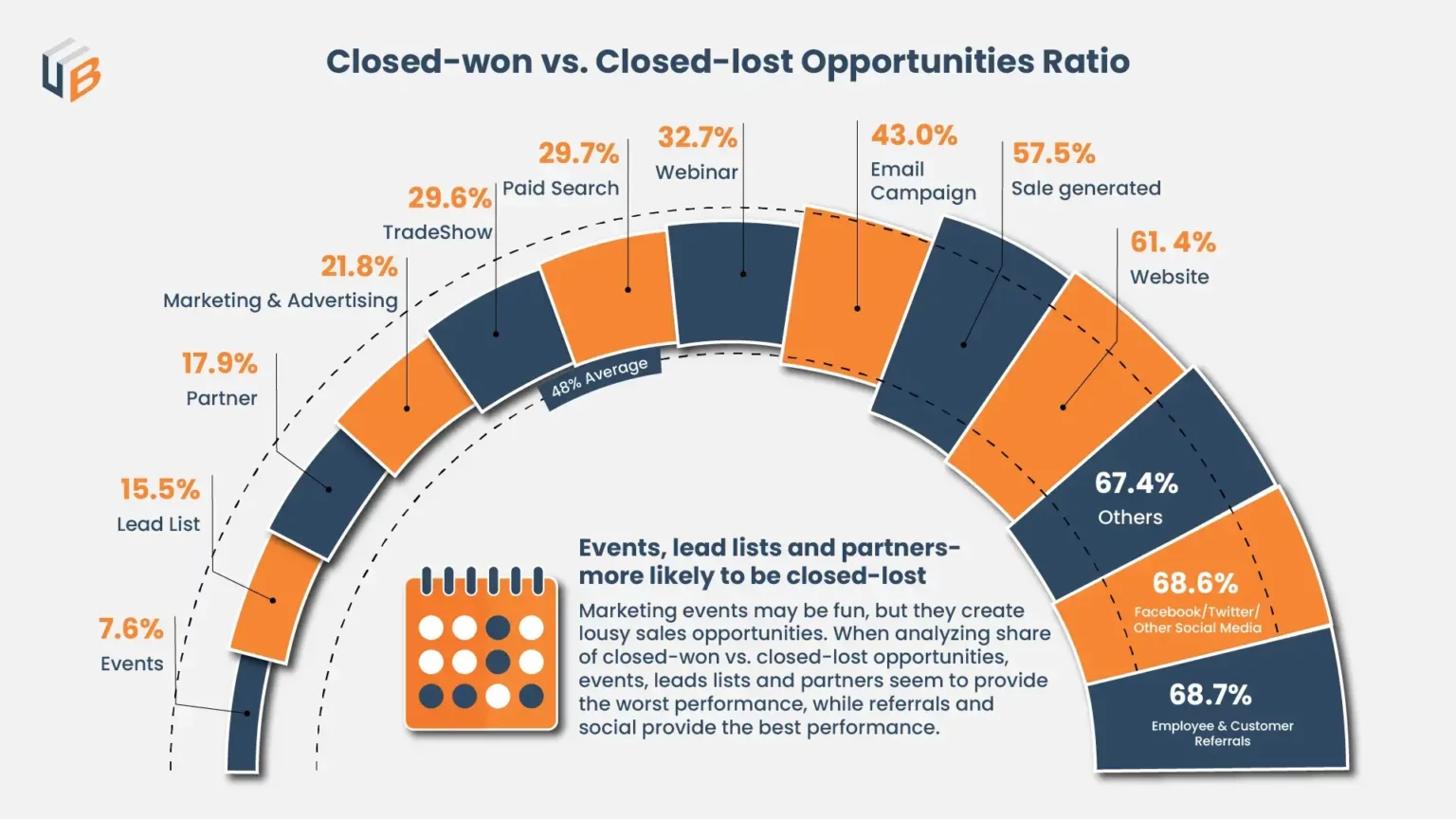
Top Outbound Marketing IoT Lead Generation Strategies-
- Add More Personalized Touchpoints
- Cold Calling
- Start Networking
- Leverage Video Ads
- Focus on Retargeting
- Content Syndication
Once you attract potential leads toward your IoT products with inbound marketing strategies, the next step is to chase those leads with outbound marketing strategies.
Outbound lead generation is a direct sales process to pouch leads fitting your ideal customer profile. Therefore, it is crucial to balance inbound and outbound marketing campaigns to convert leads faster.
Here are essential outbound IoT sales lead generation strategies:
1. Add More Personalized Touchpoints
Personalization is digital marketing’s present and future. Users today yearn for a human touch when interacting with brands. It sets the foundation for developing stronger bonds and more meaningful relationships.
When it comes to personalized offers, product recommendations, and customized shopping experiences, consumers are more than willing to share their data. According to a report, 76% of consumers are willing to share personal data in return for a personalized experience.
Thus, IoT brands must provide multiple touchpoints to their leads. There are several ways to do that, like:
- Generate personalized content based on your potential customer’s problems and challenges.
- Personalized email content based on customers’ previous purchases to cross or upsell IoT products, etc.
Let’s take the example of The Expert Institute here.
It is a legal service platform that connects attorneys and investment firms in need with experts in their database. After seeing how other B2B brands handled personalized communication, they launched their own campaign. They began with a one-to-one email marketing campaign centered on critical customer challenges.
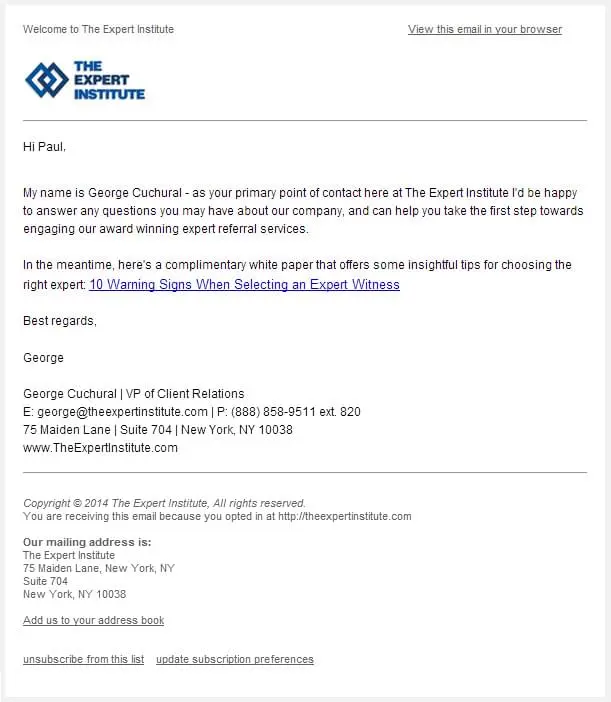
2. Cold Calling
Cold calling is a veteran outbound lead generation strategy. It is a classic marketing strategy that businesses have been using for years. And still, it is a highly effective strategy for IoT brands.
The success rate of cold calling depends upon sales representatives’ communication skills and the selected contacts. But, when cold calling is done correctly, it has around a 2% success rate, which is extremely good.
Once you have potential leads’ contact details, thanks to inbound lead generation efforts, you can directly call your leads. It helps to establish a personal relationship with them. Sales representatives can better understand potential customers’ problems and offer quick solutions.
Cold calls allow representatives to build personalized sales pitches based on instant responses. This is a humanized and more emotional marketing strategy that you can use to cut marketing algorithms monopoly.
3. Start Networking
To humanize your lead gen process, in-person opportunities are a fantastic way because it creates a more intimate and immediate connection—especially after COVID when more entrepreneurs seek face-to-face relationships.
Meeting people in person gives IoT buyers a better sense of your solutions and helps them learn how your products can help them.
You can network with your potential clients by attending technical trade shows, product launches, and other marketing events happening in the IoT world.
You can also befriend IoT leaders on social media platforms like Facebook and LinkedIn. After that, you can organize physical collaboration with your social media friends to talk more about your products and solutions over a cup of coffee.
For example, Gartner is hosting an IoT conference in 2023 to discuss new developments in the industry. It is a perfect opportunity for IoT engineers and entrepreneurs to network.
4. Leverage Video Ads
Video commercials are another effective IoT outbound marketing strategy. Video marketing is one of the most engaging content categories that grabs quick traction.
Most commercials on YouTube, for example, are only shown for a few seconds before viewers have the option to “skip ads.” If you can create appealing, engaging advertisements targeted to the right potential buyers, you may increase the likelihood that viewers will watch the entire ad.
Even if people do not watch the entire ad, video advertising can still increase brand recognition in just 5 seconds.
The HubSpot report stated that 93% of brands had acquired new customers with video content.
Thus, we always suggest our clients use AB testing techniques to design impressive video ads to hold users’ attention for longer. We also advise using different templates and content copies to make videos engaging and attention-grabbing.
5. Focus on Retargeting
Ad retargeting is an effective IoT outbound marketing method. It is a technique to display digital ads to leads who have previously expressed interest in your products.
For example, you can target leads who visit your website. By retargeting them, you can remind them of your services and keep your brand in front of their minds. This may result in more sales, leads, and conversions.
Additionally, some people prefer to see retargeted advertising. This could be because retargeted advertising frequently benefits customers, reminding them of websites they may want to revisit or transactions they still need to complete.
Statistics show that 70% of customers are more likely to convert after seeing retargeted ads.
6. Content Syndication
Content syndication is a simple marketing strategy to distribute your content on multiple marketing channels to target different audiences. It is a cost-effective marketing strategy that uses your existing content to generate more leads. It is one of the most popular UnboundB2B lead generation services.
Content syndication boosts content ROI, brand awareness and builds your content credibility. To implement the strategy, you must monitor all your content assets and select the highest-performing assets. After that, you must convert your content into different formats like blogs, videos, infographics, etc.
The Best IoT Lead Generation Strategy!
Lead generation targeting IoT has a particular set of challenges that marketers need to address. However, if these challenges are addressed by focusing on the different stakeholder-buyer pain points, then a whole world of opportunity opens up for doing business.
As you have explored the top 12 inbound and outbound lead generation strategies for IoT brands, you are now ready to grow your business reach. We suggest you create a perfect balance between internal and external marketing campaigns. It can help you find and convert leads faster.
That’s it for now! If you need help implementing these strategies, contact our team anytime.
Our blog
Latest blog posts
Tool and strategies modern teams need to help their companies grow.

Video has emerged as one of the most effective tools to cut through the noise and con...

The way B2B buyers research, engage, and decide has changed and so must the way marke...

Channel marketing helps B2B companies grow by partnering with third-party sellers. It...






